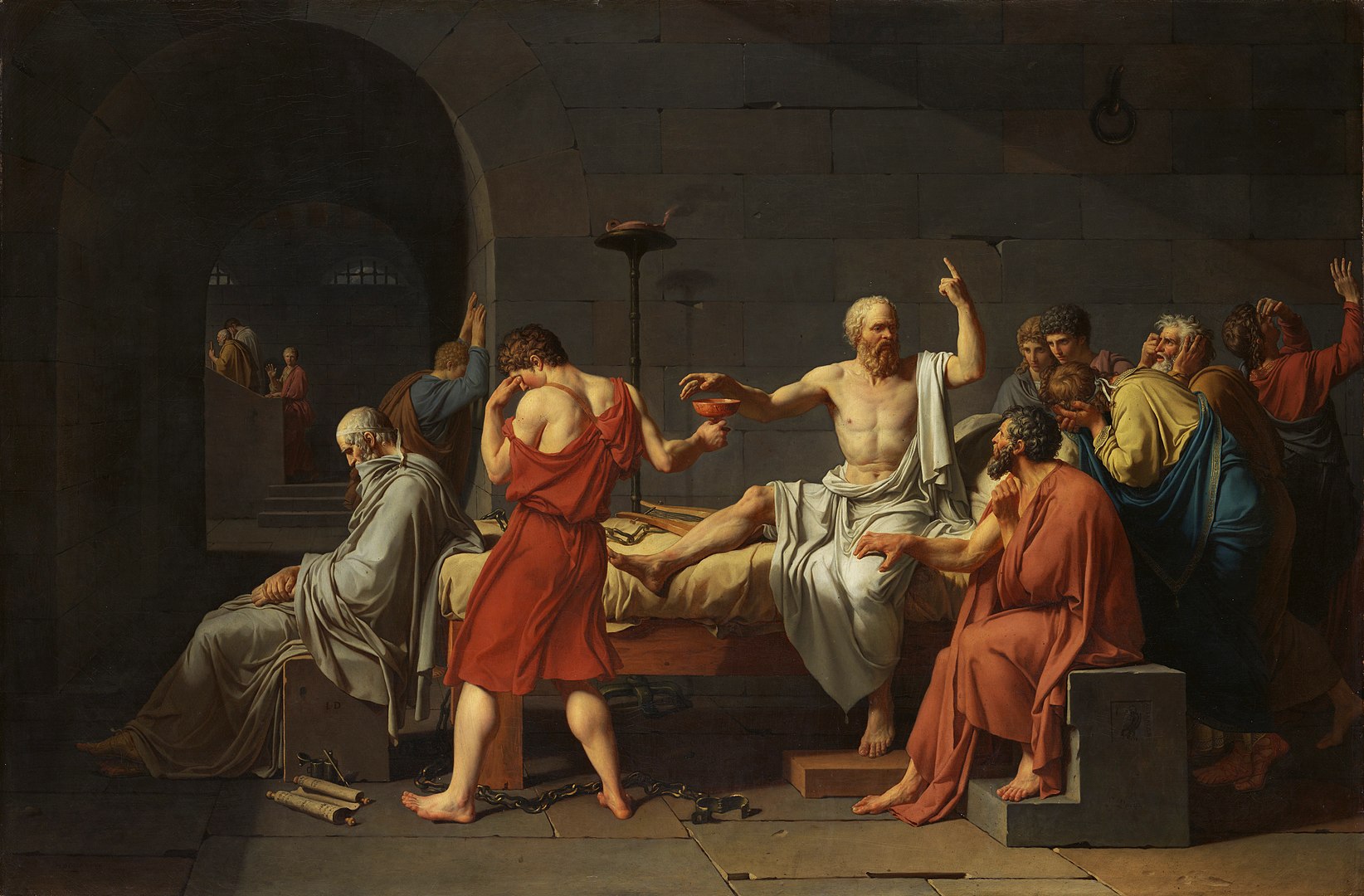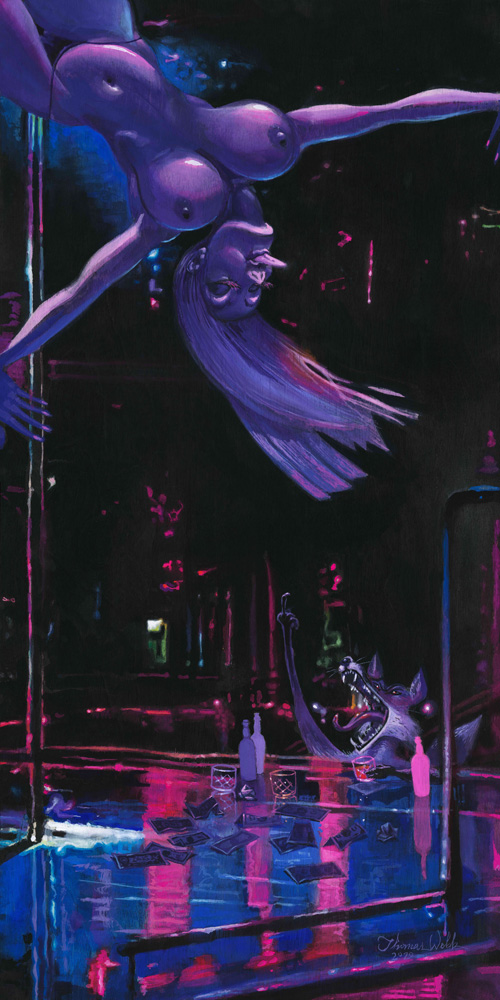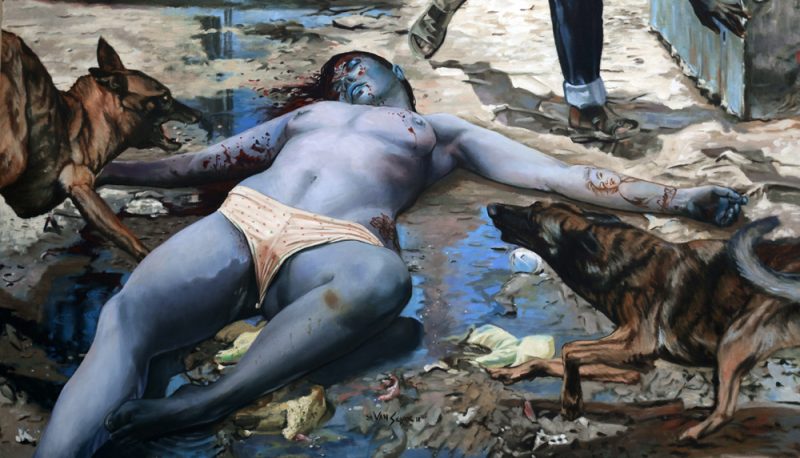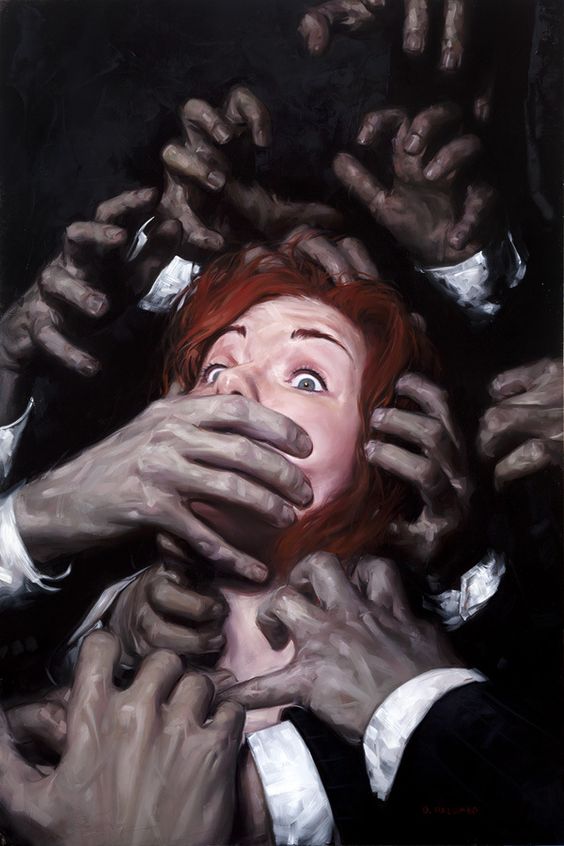We get the story of Socrates’ death and his teachings on the soul from Plato’s fourth dialogue Phaedo. Socrates was often critical of the Athenian state and so was found guilty on trumped up charges of impiety and corrupting the minds of the youth. He was sentenced to drink poison hemlock. This painting was a useful analogy to the political upheaval at the time in France just prior to the Revolution, as many French felt that the monarchy had likewise abused its power over the people.⠀
Here we have Socrates at center with his hand poised just over the hemlock, on the cusp of his final action (David has skillfully created a focal point of dynamic tension in the painting). He appears strong and willful in contrast to the crowd of lamenting followers. The composition of the bodies draws our eye forward to the figure of Plato seated at the foot of the bed. He has turned his back to the scene and hangs his head in quiet sadness. In reality, Plato was a younger man at the time of Socrates’ death and was not even present for the execution.⠀




